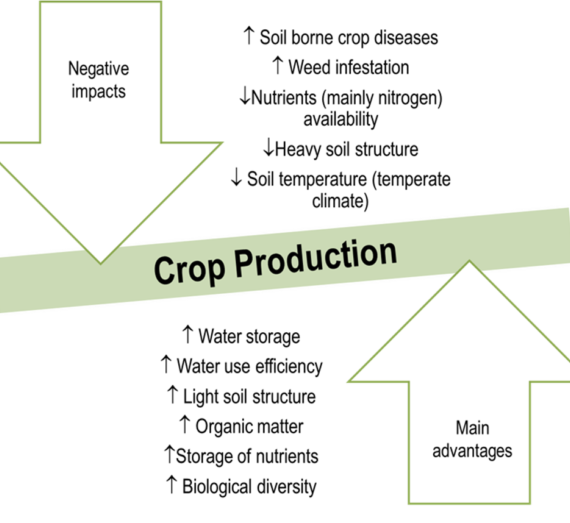Integrated use of the next generation plant biostimulants for an enhanced sustainability of field vegetable high residue farming systems – STIM 4+
Proiect RO-NO-2019-540
Abstract
The project addresses mainly the thematic area of Biotechnology, more exactly the key topic Biotechnology for agriculture, aquaculture, forestry and biomass production. The biotechnological solutions which STIM4+ project proposes to develop are intended to compensate the negative effects of the low-input, high-residue sustainable vegetable production systems. These proposed biotechnological solutions are related to the use of the next generation plant biostimulants. Plant biostimulants represent an emerging class of agricultural input, which protect plants against abiotic stress, enhance / benefits nutrients uptake and improve yield quality . The proposed plant biostimulants to be used for an enhanced sustainability of field vegetables grown in a high residue system are including into all classes / subclasses mentioned in the new EU Regulation 1009/2019. The multi-functional Trichoderma strains-based plant biostimulants (a microbial plant biostimulants) will be included into a glycodinameric, chitosan based bioactive (micro)hydrogel formulation. Decoration of microgels with anchor peptides will be used as a (micro)hydrogel tackifier on the plant residues. The bioactive hydrogel is based on an organic plant biostimulants (chitosan), which will be used to generate a biocompatible 3D porous structure, thermo- and pH-responsive and with a hydrophilic – hydrophobic segregation feature. This hydrophilic – hydrophobic segregation (micro)hydrogels will be used for embedding hydrophobic mimetic strigolactones. Propper application technologies of such smart formulated hydrophobic molecules will be developed, to exploit strigolactones both functions, as exo-signals for a better harnessing of beneficial microbiome and as cue for deleterious organisms (e.g. to induce suicidal germination of parasitic plants). The smart formulated bioproducts / agricultural inputs and the agricultural practices intended to exploit their specific features of such bioproducts are an example of biotechnologies for agriculture. The natural strigolactones mimics will be a part of the microbial standardized extract, which we intend to produce from microalgae culture and which is another example of organic plant biostimulant. This microbial standardized extract will include natural strigolactones, polyamines and betaines. Both strigolactones and polyamines are exo- and endo-signals. As exo-signals, both strigolactones and polyamines have been demonstrated to enhance mycorrhizae hyphal branching and root colonization. As endo-signals, both strigolactones and polyamines are involved in plant stress responses. Betaine also supports plant response to stress, especially to drought. Strigolactone mimics used for laboratory screening will be synthetized based on a rational bio-design. The inorganic plant biostimulants are represented by selenium, as zerovalent nano-selenium. A large body of evidence demonstrates that selenium acts as a plant biostimulant. Selenium protects plants against abiotic stress, especially drought, enhances / benefits nutrient uptake and improves edible yield quality. Nanoselenium (zerovalent) particles show a much lower environmental impact and an improved efficiency compared to other selenium species. Application of selenium nanoparticles reduces the risk of accumulation of polyamines in the edible yield. From a food safety point-of-view, accumulation of polyamines in vegetables grown into HV mulch could have some carcinogenic effects, because polyamines were found to support proliferation of various tumor cells.
The project is an interdisciplinary one and address also other key topics as Environmental impact and risk assessment of the modern, new and emerging technologies and products. Safety and environmental impact of the new developed products will be determined by a state-of-art 3R techniques, by Norway partners. The project contributes to the objectives and the priorities of the call. It supports research cooperation between Romania and Norway and consolidate a strategic partnership.
Objectives
The STIM 4+ project objectives are: (i) To develop next generation plant biostimulants intended to improve the resource use efficiency of high-residue grown vegetables; (ii) To assess and to characterize the new plant biostimulants effects on vegetables and rhizosphere microorganism; (iii) To investigate the safety and environmental impact of the next generation plant biostimulants.
Expected results
The expected results are: (i) selected strains which respond to strigolactones, which will be used to produce the microbial plant biostimulants; (ii) integrated process to produce zero-valent biogenic nanoselenium – inorganic plant biostimulants and microbial concentrated extracts – organic plant biostimulants; (iii) optimized reactions to produce strigolactone mimics, with enhanced exo-signal activities; (iv) glycodynameric hydrogel, for application on the plant residues and formulation of the plant biostimulants; (v) improved application methods, which integrate plant biostimulants for a targeted effect on negative impacts of field vegetable high residue farming systems
Partners
- National Institute for Research-Development in Chemistry and Petrochemistry – ICECHIM (Institutul Național de Cercetare-Dezvoltare pentru Chimie și Petrochimie – ICECHIM), dr. habil. Florin Oancea, Project Director
- Norwegian Institute for Water Research, (Norsk Institutt for Vannforskning – NIVA), Partner 1, acronym NIVA, dr. Steven Brooks, Project Responsible
- Institute for Macromolecular Chemistry „Petru Poni” (Institutul de Chimie Macromoleculară “Petru Poni”), Partner 2
- NorGenoTech AS, Partner 3, dr. Sergey Shaposhnikov, Project Responsible
- Enpro Soctech Com Srl, Partner 4, dr. Florentina Georgescu, Project Responsible
- Amia International Export-Import, Partner 5, drd.ing. Liliana Pairault, Project Responsible
2020 – Design of the experimental models and procedures
- Deliverables:
-Dissemination and communication initial plan (D7.1).
-Consortium Agreement (D7.4a).
-1 Functional web site (D7.2).
- 3 new jobs created.
- 1 new joint application (ERA.NET ACT).
- 1 article submitted for publication – 1 review /opinion paper.
- 15 supported researchers.

